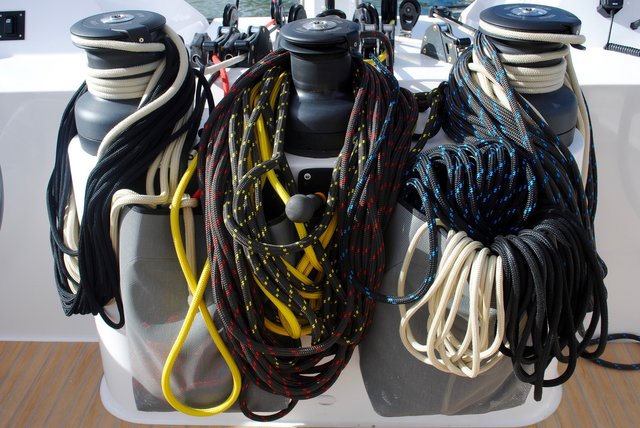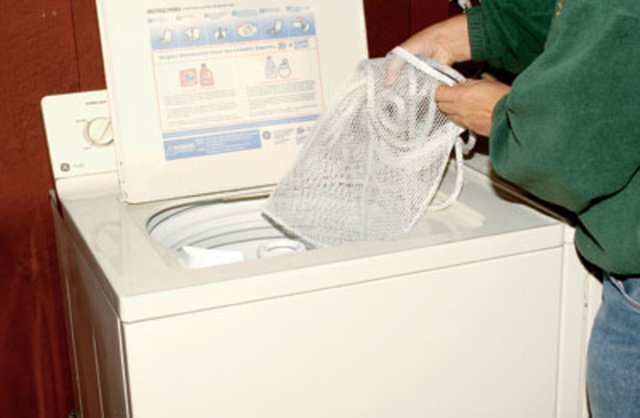Running rigging a.k.a. “all your ropes”

Before you untie the lines, you should take a closer look at them. Choosing the right kind of rope for the right kind of job is crucial, don't just throw money at things that “seem ok”.
(Although we know there are a lot of people who are masters of improvisation when it comes to sailing, and it's not necessarily a bad thing.)
Parts of running rigging
Sailboat rigging consists of two main parts - standing rigging (steel cables) and running rigging (lines and ropes).
Lines all have a specific purpose, such as halyard (for pulling up the mainsail), downhaul (for bringing it back down). Trimming lines, also called sheets, include - Mainsheet (trimming the mainsail), Jibsheet (for trimming the jib), and others, like “Kicker”.
There are even more types of rope, however, and you use some of them everyday on a boat (mooring line and fender line, mostly). Floating lines are useful in rescue/safety situations, so it's good to have those as well, of course. And if you ever wondered if those extra thin lines that you see around have a special name, you guessed it - they do - they're called “softline” or “flagline” (for tying up those flags you sail under!).
What lines are made of…
Polypropylene has medium to high stretch, it is lightweight, cheap, but has poor UV resistance. It is mainly used for floating lines used for man overboard recovery, but also as core sheets on small boats.
Nylon is very stretchy, so it's mainly used for mooring and anchoring lines. That's about the only type of line that benefits from nylon's properties, everywhere else you want minimal stretch.
Polyester is quite stretchy and as it ages, it becomes more pleasant to handle than Nylon. Polyester is used in docklines, halyards, sheets and low load control lines.
Aramids, such as Dyneema, Kevlar, Technora and Vectran, are very strong, heat-resistant, low-stretch, synthetic fibres. They are used in blends on all performance boats for their durability.
For more information about Dyneema ropes, check out the video below:
Maintenance is key

Longevity of your lines and ropes depends on how you take care of them. Polyester and nylon are machine washable in some cases. You can read more about how to wash your ropes on this blog by Mark Corke.
In case of more high-end lines (with special dyes or fibres such as Kevlar), always consult with the manufacturer about how to best clean them.
Most important thing is to avoid contact with harsh chemicals, acids and alcohols. Nylon is especially vulnerable to acids, even soaking in a mild acid cleaner for a few minutes can weaken the fibre by as much as 50% and stronger acids can melt through the rope in a matter of minutes!
If you machine wash, it's good to braid the rope and use a protective case for gentle washing.
There are several types of knots you can use, most common are daisy-chain, monkey-braid (also called “chain sinnet”). For guidance, check out http://www.animatedknots.com/, where you can find animated knots of various kinds.
Some words of caution
You shouldn't underestimate the casual wear and tear of materials. Always check parts of the boat surrounding the lines - sharp corners can do more damage than acid sometimes. Metal hardware is prone to rust, which is never a good thing, but rust particles will definitely damage lines and ropes as well.
Whether you're attending a regatta, or just enjoy competitive sailing, reconsider what you use on your yacht - high performance boats should use high performance materials.
May these words of caution convince you:
“We’ve seen cases where [the crew has] melted a polyester cover onto the winch drum in a day’s use, where an Aramid blend would have lasted a season.” - Paul Dyer, of Marlow Ropes
There you have our little guide to running rigging and maintenance. Happy sailing!
https://steemit.com/news/@bible.com/6h36cq